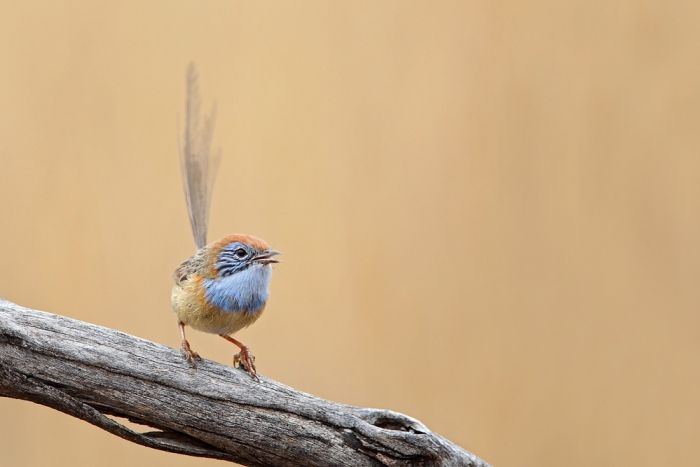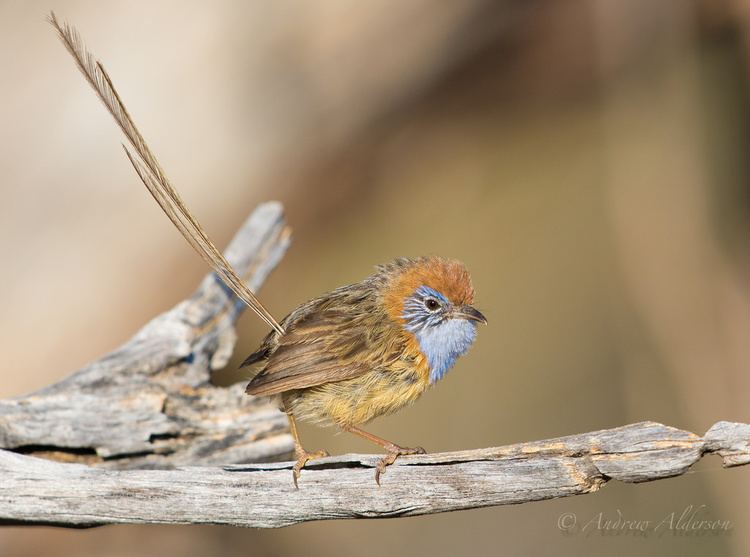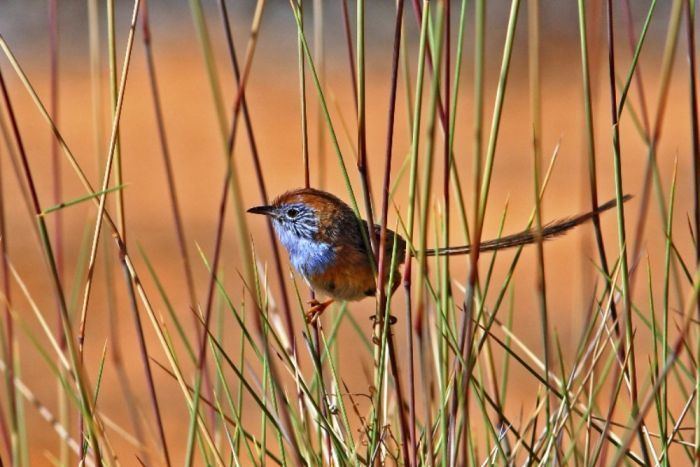Order Passeriformes Genus Stipiturus Higher classification Emu-wren | Phylum Chordata Family Maluridae Scientific name Stipiturus mallee Rank Species | |
 | ||
Similar Emu‑wren, Bird, Striated grasswren, Southern emu‑wren, Grey grasswren | ||
Mallee emu wren at wyperfeld national park
The mallee emu-wren (Stipiturus mallee) is a bird species in the family Maluridae. It is endemic to Australia.
Contents
- Mallee emu wren at wyperfeld national park
- Taxonomy
- Description
- Distribution and habitat
- Behaviour
- Breeding
- Conservation
- Current threats
- References
Its natural habitat is temperate grassland. It is threatened by habitat loss.
Taxonomy

The mallee emu-wren is one of three species of the genus Stipiturus, commonly known as emu-wrens, found across southern and central Australia. It was first described in 1908 by Archibald James Campbell, and has been considered a subspecies of either of the other two species; with anywhere from one to three species recognised in total. No subspecies are recognised. The common name of the genus is derived from the resemblance of their tails to the feathers of an emu.
Description
The mallee emu-wren is an average 16.5 centimetres (6.5 in) from head to tail. The adult male mallee emu-wren has olive-brown upperparts with dark streaks, and a pale rufous unstreaked crown, and grey-brown wings. It has a sky blue throat, upper chest, lores and ear coverts. The lores and ear coverts are streaked with black, and there is white streaking under the eye. Though still long, the tail is not as long as in other emu-wrens, and is composed of six filamentous feathers, the central two of which are longer than the lateral ones. The underparts are pale brown. The bill is black, and the feet and eyes are brown. The female resembles the male but lacks blue plumage. Its crown is paler red and it has white lores. Its bill is dark brown. The mallee emu-wren moults yearly after breeding, and birds have only the one plumage.[1] The most recognizable and identifiable feature is the six emu-like feathers on its tail. This feature is highly distinguishable from other species found in its home range.
Distribution and habitat

The mallee emu-wren is restricted to open mallee woodland with spinifex understory in northwestern Victoria and southeastern South Australia. This region is rich in Triodia or as it is commonly known spinifex. The spinifex grass often grows to 1 metre (3 ft 3 in) in height and provides the optimal habitat for the mallee emu-wren (Howe 1933). [1] Formerly classified as a vulnerable species species by the IUCN[3], recent research shows that its numbers are decreasing more and more rapidly. It is consequently uplisted to endangered status in 2008[4]. The mallee emu-wren is listed as nationally endangered under the Australian Environment Protection and Biodiversity Conservation Act 1999. The current estimated total population size is approximately 4,000 birds. Although this species is widely dispersed throughout the Murray Sunset Reserve its home ranges are patchy throughout the 488 square kilometres (188 sq mi) reserve. (Brown 2008) Recent studies have concluded that the species is wider spread than thought before. However the species is much rarer in the southern regions of the preserve (Brown 2008). Their dispersion is heavily connected to the prevalence of Triodia. Triodia is a plant genus that is grass like and forms a hummock. This biotic factor is the most heavily influencing factor in the dispersion of mallee emu-wren (Brown 2008).
Behaviour

Like all emu-wrens, the mallee emu-wren is difficult to observe in clumps of spinifex. The mallee emu-wren is not a proficient flier (Garnett and Crowley 2000). The mallee emu-wren's diet consists mainly of insects including beetles, seeds, and some vegetation (Schodde 1982).
Breeding
Breeding is little known, but has been recorded between September and November. The nest is a dome shaped structure built of grasses generally located deep within a clump of spinifex. Two or three oval eggs are laid which measure 13.5 to 16 mm (0.53–0.63 in) by 10 to 12 mm (0.39–0.47 in). They are white with reddish-brown freckles, more concentrated over the larger end.
Conservation
Surveys have been conducted at Billiatt Conservation Park and Ngarkat Conservation Park in South Australia (Clarke 2004; Gates 2003), and at Murray-Sunset National Park, Big Desert Wilderness Park, Big Desert State Forest, Wyperfeld National Park, Wathe Flora and Fauna Reserve and Bronzewing Flora and Fauna Reserve (Clarke 2007), and around Nowingi (Smales et al. 2005), in Victoria. The conservation status of the species has been re-assessed (Mustoe 2006). The habitat of the species has been modeled (Clarke 2005a). Information on the role and impact of fire in habitats occupied by mallee emu-wren has been summarised (Silveira 1993). A national recovery plan (Baker-Gabb in prep.) is being prepared, and a regional recovery plan is already in place (Clarke 2005; SA DEH 2006). An updated Flora and Fauna Guarantee Action Statement have been drafted for the species in Victoria (DSE 2007).
Current threats
Too frequent burning
Climate fluctuations
Land uses
